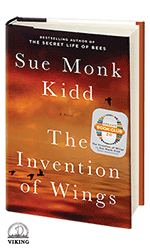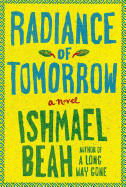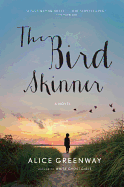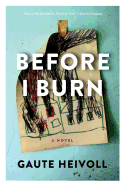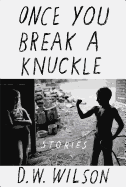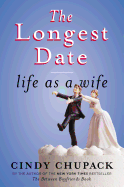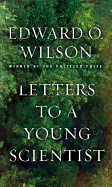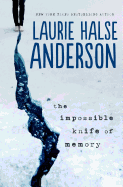 |
| photo: Roland Scarpa |
Sue Monk Kidd was born and raised in Georgia and now lives in Florida with her husband, Sandy, and their black lab, Lily. First published in 1988, she has written fiction, nonfiction and memoir. The Invention of Wings is her first work of historical fiction. Kidd's bestselling books include The Secret Life of Bees, The Mermaid Chair and, with her daughter Ann Kidd Taylor, Traveling with Pomegranates. Kidd is very active on Twitter.
How much research did you do on the real Grimké sisters?
Well, I began reading about the Grimké sisters, and I could hardly stop. I was inspired to write the novel because I discovered them at Judy Chicago's Dinner Party exhibit in New York, and I came home very excited and began to read about their lives. And that went on for months. I suppose I did full-time research for about six months before I began writing, and then I wrote for three and a half years, during which I was still doing a lot of research. I would sit in front of the computer, inventing and writing, and suddenly I would have to get up and figure out what kind of mourning dress widows wore in 1819. Or what were the emancipation laws in South Carolina at that time. It was constant, ongoing research. And it wasn't just reading books; I made trips to the Library of Congress, the Smithsonian, the New-York Historical Society--and of course a lot of places in Charleston. That was a primary site for me, and a lot of organizations were helpful.
Did you enjoy that research?
I loved it so much that I had to make myself stop and start writing. I think a writer can get lost in her research if she's not careful! There's a point where you just have to put it aside and begin writing. I was very concerned that I get that era right. I wanted it to be as authentic as I could make it, rich with details, and I wanted the reader to be plunged into a real world. So I needed to gather a lot of information, and I really had fun doing it.
How important is historical accuracy in fiction, and how faithfully does this novel stick to the historical record?
That is such a large question for any author of historical fiction. In this case, I was not only writing about a time and place that existed, but I decided to populate the book with real historical figures. As this was my first book of historical fiction, it was a learning curve for me. I started off so enamored with Sarah Grimké's history, just in reverence for her life and her history and that of her sister, too, that it was very hard to deviate from that historical script. It took me a long time to come to a place where I understood that there was Sarah Grimké, the historical figure, and then there was Sarah Grimké, my character. And I'm not a biographer, and I'm not a historian; I'm a novelist. I had to come home to that again, because I was so caught by her history. I would say that I wrote the truth of Sarah's life as much as I possibly could, and I think that anyone who reads the novel will find her life rendered there pretty closely. But my goal, I realized, was to serve the story itself, and that meant that I had to deviate some. It meant that I had to invent; it meant that I had to find Sarah in my own imagination as well as in history, and that was really crucial. The moment that I was able to let go and do that, she became alive for me in this book.
How did you make the decision to write this story in two voices?
When I began, I was inspired to write the story of Sarah Grimké, and that was as far as I got. I knew I wanted to write her story in first person, because I love the intimacy of that first-person voice. I feel like I can inhabit her and her mind and her heart, and I love seeing the world through her eyes. I love the closeness of that and what it allows me to do, to get into her inner life. But as I began reading about the history, it became very quickly apparent to me that I could not just tell her story without telling the story of an enslaved character. It seemed that in order for this whole time and place to be fully fleshed out, I needed to enter the lives of two characters. So as I was reading about Sarah's childhood, I discovered she had been given what she called a waiting maid, when she was somewhere around 11 years old. This waiting maid was named Hetty, and Sarah taught Hetty to read, and then Hetty died soon after that, as a young person. That's everything I knew about her life. But the moment I read about her I knew that this was the character, and that I could have this close relationship between them that's also a complicated, difficult relationship, and I could talk about both worlds. Now, it was daunting to me to do this, to be honest, because writing first person from the standpoint of an enslaved female character is pretty far flung for me. So that was sort of my literary sky dive, I guess! But it was apparent to me that that's what I needed to do, to tell both stories.
Sarah left plenty of detail to history, including many writings in her own voice, while Hetty barely existed at all on the record. Was it freeing to write Hetty, in comparison?
It was absolutely freeing. Maybe the biggest surprise in writing this novel for me was that Hetty's voice was more accessible, that it came to me more easily. This I did not expect. I thought it might be the opposite, actually. I think it was because Sarah came with this big historical script, and we knew basically nothing about Hetty. So I had this broad imaginary canvas to fill in. It freed me, I think, just to be able to explore and to just let her talk--and she would talk! I mean she would just talk, talk, talk to me.
Hetty's mother, Charlotte, is a rich personality who keeps her secrets. Does she have a historical counterpart? Where did you find her?
There was a little seed of something that kind of helped me to create her character. When I was reading the slave narratives, I came upon one sort of secondhand story: one woman was speaking about her time in slavery, and referred to someone named Sukie, who was apparently a very defiant, unusual woman. She told a story about how Sukie resisted her master's advances and pushed him into--I think it was a hot pot of lye soap or something like that--and he was burned, and for that she was sold. And she remained very defiant to the very end. Something about that ignited this idea in me, and I wanted to be sure that Charlotte was someone who could protest and resist and who was concerned about her own self-possession, who had this spirit of insurrection and even subversion. I think it's important to offer images of enslaved women who are not just victims. We've had far too much of that, I think. I wanted to show women who were not just victims, certainly not in their minds. They were in a struggle to be human, self-possessed, to fight back and to show this kind of defiance and resistance. In that regard, the slave narratives were evocative for me of the kind of character that I tried to bring to Charlotte.
Do you have a favorite character? Or one with whom you especially identify?
Oh, it's always hard for an author to say which character is her favorite! It's like picking between your children! As a writer, I feel like you have to love all your characters, even the so-called misbehaving ones. But having said that, it's true, your heart gravitates to your characters in special ways. I remember reading something Alice Walker said that I referenced recently. She spoke about writing about her mother in literature, and she said, my mother was all over my heart, so why shouldn't she be in literature? And I just loved that line! I thought, that's how I feel about Handful. She's just all over my heart. And every day that I wrote, I had this very special feeling about her. I love Handful's great hope, and the way she used irony and wit to deal with things.
Sarah's big struggle, at least in my novel, was to find her voice. I literally gave her a speech impediment, which the historical records say she did not have, but I have this idea that writing a novel is really about taking a bad situation and making it worse! Sarah had difficulty speaking in public, but she didn't have an impediment, so I sort of enhanced it and made it a little worse. That's one example of how I deviated from the record to serve the story. Her journey was to find her inner voice and to be able to articulate her truth in the world, and I identify with that--I think many people identify with that.
What have you read and loved lately?
Well, I just made this long transatlantic flight, and I hauled books on board instead of my iPad! I don't know what that says about me. I read three Edith Wharton novels that I had not read before, and I hate to admit that I hadn't read these; but I guess we all have classics that we've not read and we're ashamed to admit we've not read until we finally do! Those were The House of Mirth, The Custom of the Country and The Age of Innocence, and I thought--what took me so long? And then I read Delia Ephron's Sister Mother Husband Dog: Etc., which I just loved. The other book I read recently was Dear Life by Alice Munro. All wonderful books. There are so many and so little time! That's what's so great about a nine-hour flight, you know. --Julia Jenkins
Sue Monk Kidd: Inhabiting the Past
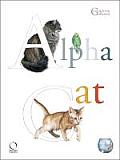 "O" is for Ocicat, a new breed that forms an exclusive bond with a person and suffers from loneliness. The striped cat peers out from an "O" with an intense gaze, daring you to leave it alone. "S" is, of course, for Siamese, and the cat looks quite regal curled around its letter. The Ragdoll coyly poses behind the "R," while a Manx kitten stretches down and across the "X" to reach a goldfish bowl.
"O" is for Ocicat, a new breed that forms an exclusive bond with a person and suffers from loneliness. The striped cat peers out from an "O" with an intense gaze, daring you to leave it alone. "S" is, of course, for Siamese, and the cat looks quite regal curled around its letter. The Ragdoll coyly poses behind the "R," while a Manx kitten stretches down and across the "X" to reach a goldfish bowl.


